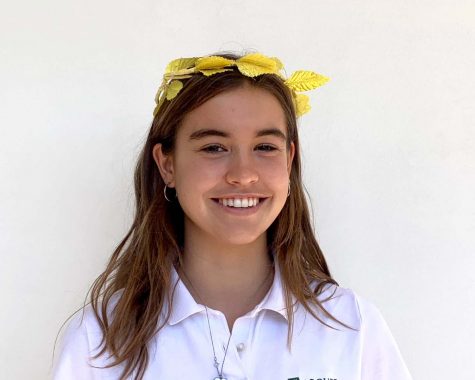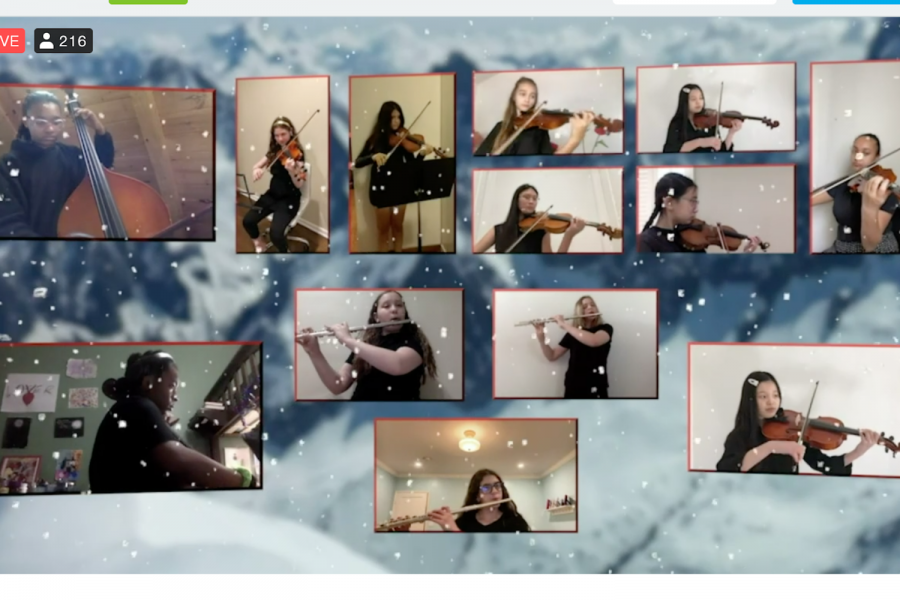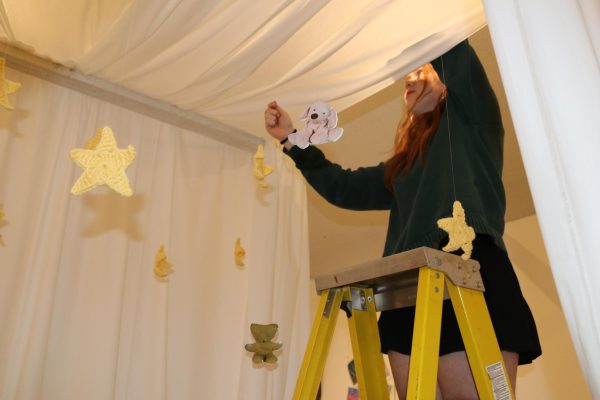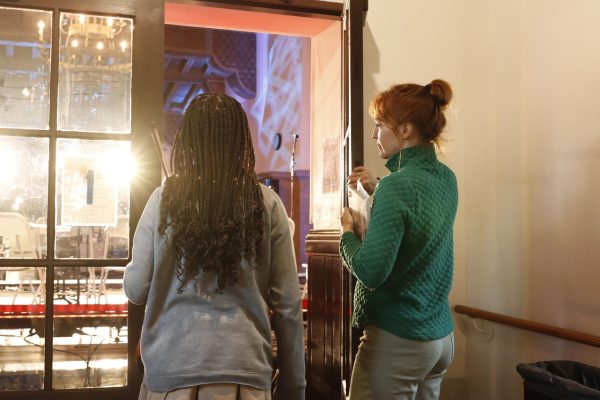Musical magic: Winter Concert adapts to virtual setting
Photo credit: Greta Irvine
The middle school Orchestra performs a song during the Winter Concert. The musicians recorded two videos, one for audio and one for visual, which were then edited together and added to virtual background and streamed on Vimeo.
The middle school choir sings in a virtual kitchen, dressed in aprons while whisking up treats and the upper school orchestra performs the song “Snowflake” surrounded by an image nighttime snowfall. Having moved to remote learning, Archer’s choir and orchestra groups had to reimagine how to rehearse and put together the 2021 Winter concert, which was streamed on Vimeo to over 200 audience members in an hour-long show.
“Rehearsal was difficult because one of the coolest parts of orchestra is getting to feel like you’re making something with a whole bunch of other people and getting that collaboration,” orchestra member Lucy Brodsky (’23) said. “But we did not get that as much at home. It was really cool to hear the concert when it finally was edited together because it sounded like we were actually playing together.”
Orchestra and choir rehearsed every other week working in breakout rooms with different section leaders. Lacking the ability to talk through the music in a class setting, the orchestra students recorded themselves on SmartMusic to send to Orchestra Director Susan Smith for feedback. Leading up to the concert, musicians recorded themselves twice: first on GarageBand just playing their instrument for the video, and the second recording for the sound.
“There was an extra level of pressure put on us when we were filming the video, but we also realized that we had multiple times to get the perfect recording,” orchestra member Kate Beckerman (’25) said. “Normally I am always nervous before a performance, but I think there was a certain sort of laid back nervousness to it because of the fact that we could record multiple times until we got the one that we felt was the best.”
The virtual setting posed additional challenges for teachers who could only hear one musician at a time, which meant they could only give individual feedback rather than group corrections. Despite the separation of squares onscreen, the orchestra was able to maintain a sense of community and new leaders emerged in the unusual setting.
“I saw some students really be able to take on some new leadership roles, and that I would put groups in breakout rooms and different students would be the leader on different days,” Smith said, “So I think that is a bit of positive, learning more independently, and for some students to learn how to run a sectional [section of orchestra].”
According to Brodsky, individual leadership also became an essential element to the success of the concert, an aspect less crucial in past years.
“It is especially apparent this year that your own effort is what makes the team come together. Last year, when we were doing this in person, you could have control over how quietly you played and rely on other people to make the team sound good. But since we were submitting individual recordings, you had to get to a place where you felt good about what you were putting into the group,” Brodsky said. “So I think that the saying, ‘a chain is only as strong as its weakest link’, did become more apparent to me as I played this year because of the fact that I was held accountable by my own recordings.”
If all orchestra members are tuned correctly and play the same notes, then they should sound the same, but choir was posed with the unique challenge of having to hit the correct tone and match one another’s tune without hearing the rest of the group.
“When you’re in choir, you have to think about your tone and all these different things that not everyone might be able to agree on because not everyone is going to be off mute. So I think it’s definitely harder to manage that, but I think it was a good experience just to get to know how we can adapt to these new environments on Zoom,” choir and orchestra member Martha Castro (’23) said. “When you’re on Zoom there’s not a lot of room to talk and kind of communicate and engage with each other; I think we had to listen to tracks a lot of the time so we didn’t really listen to each other.”
As both orchestra and choir had members practicing in breakout rooms or individually, musicians didn’t hear the pieces when they were edited together by Landon Todd Johnson and added to the virtual background. Musicians were proud and impressed with the final results and the success of the concert.
“I was blown away when I heard the finished product because when I was practicing I only heard myself play but when I watched the concert, I could hear all the other parts harmonizing.” Beckerman said. “I was just completely awestruck about how well they put it together.”

Thea Leimone joined The Oracle in 2018 and became the Features Editor in 2021. She loves swimming and was on Archer's varsity swim team for three years....

Greta Irvine joined the Oracle as a staff reporter in 2020 and became the News Editor in 2021. In 2022, she became the Editor-in-Chief. She graduated in...








